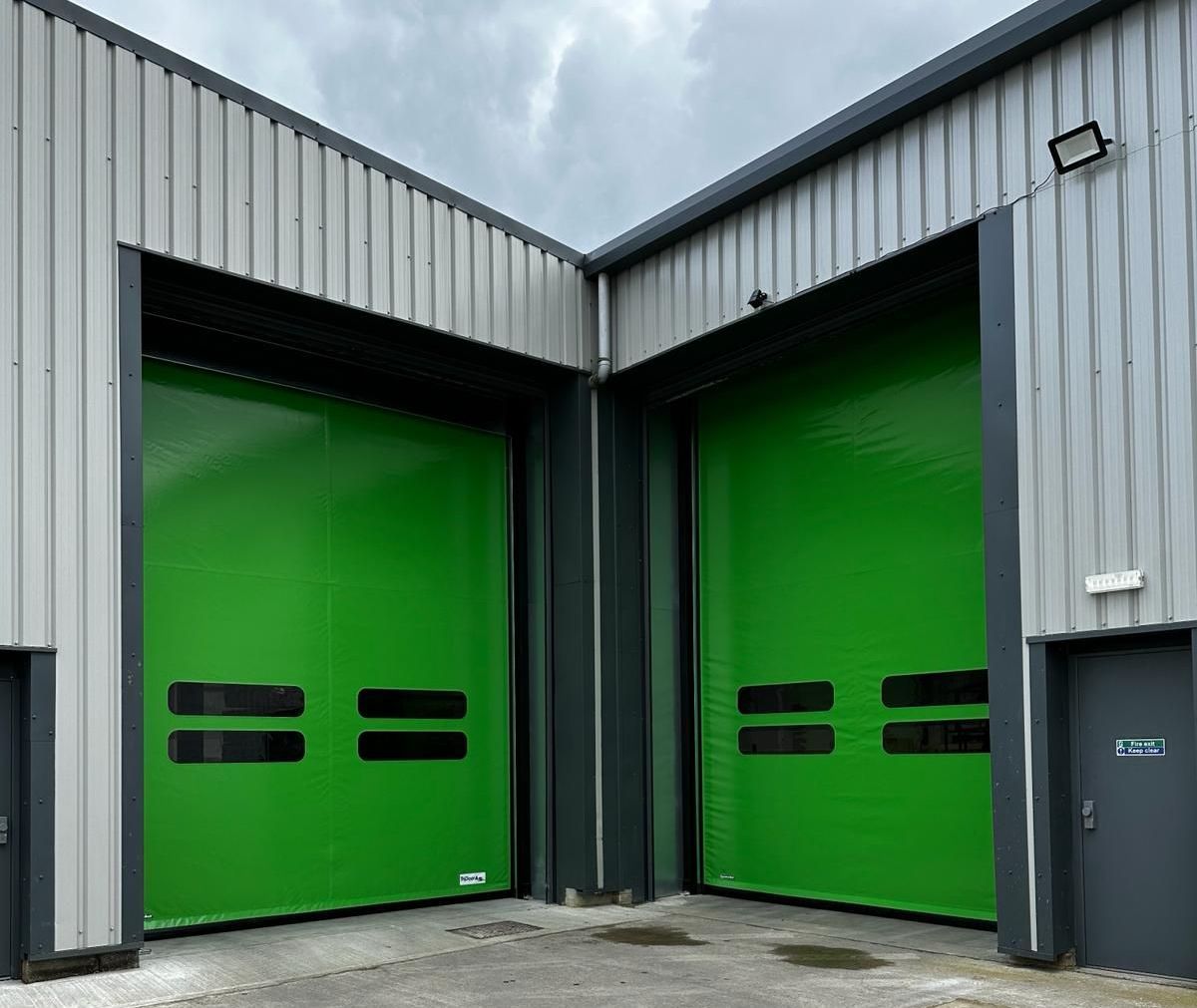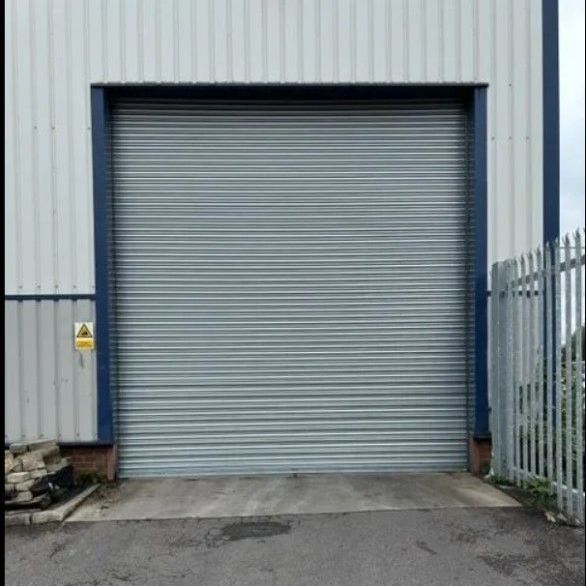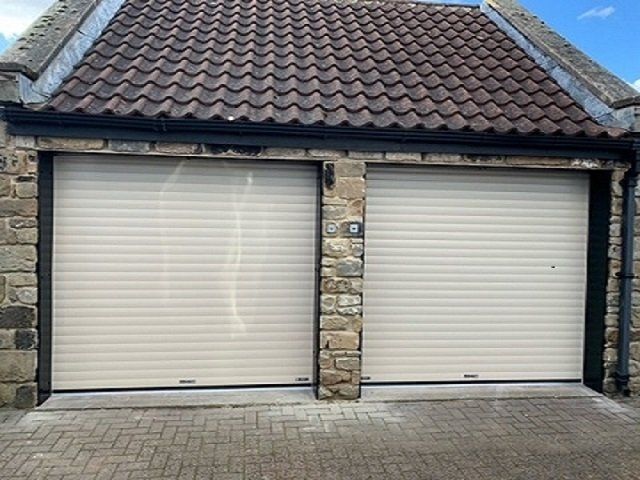
Why Prompt Door Repairs Matter: Safety, Compliance, and Peace of Mind A broken or malfunctioning door might seem like a minor inconvenience until it compromises safety, security, or access to your home or business. Whether it’s a garage door that won’t close, a roller shutter stuck halfway, or a fire exit that doesn’t latch properly, the consequences of ignoring door repairs can be serious. At Tridoor , we understand how crucial it is to restore doors quickly and correctly. With a UK-wide team of trained engineers and round-the-clock callouts, we help homeowners and businesses stay safe, compliant, and operational. Here’s why professional door repair should never be delayed. 1. Safety Comes First Doors are safety-critical parts of any property. When they don’t function properly, they can pose risks to those living or working around them. Faulty electric garage doors may unexpectedly fall or fail to open, posing a danger to people and vehicles. A damaged fire door might not close or seal correctly in the event of a fire, reducing its effectiveness in containing smoke or flames. Timely repair helps ensure: Safe entry and exit for occupants Reliable emergency functionality , especially for fire doors Compliance with health and safety standards At Tridoor, our repair teams prioritise restoring these essential safety functions, whether it’s a home garage or a commercial premises. 2. Protecting Property and Security Every door is also a security barrier. A door that doesn’t close or lock properly can be an open invitation for theft or vandalism, particularly for: Roller shutters on high street shops Pedestrian doors in warehouses or schools Garage doors in residential areas If your premises are left exposed, the cost of inaction can far outweigh the cost of repair. Our engineers are equipped to carry out same-day roller shutter repairs , garage door repairs , and more, helping protect your property fast. See our full repair services 3. Regulatory Compliance Matters Certain door types, especially fire-rated doors and emergency exits , are legally required to function correctly. If a routine safety inspection identifies a fault and it’s not repaired promptly, your business could face: Compliance penalties Insurance complications Legal liability in the event of an incident Tridoor offers repair services that meet BS standards and building regulations, with documentation and certification provided as needed. We work closely with schools, councils, and commercial landlords to ensure all properties remain compliant and safe. 4. Cost-Saving Through Timely Repairs A faulty door left unrepaired can often lead to worse, and more expensive, damage. Motors burn out, tracks become misaligned, seals degrade, and entire systems may fail. With early intervention: Repairs are usually faster and more affordable Damage can be contained , avoiding full replacement. You benefit from less disruption to daily use. We also offer preventative maintenance plans , helping our clients extend the lifespan of their doors and reduce unexpected repair costs long term. 5. Why Choose Tridoor for Repairs? We know how stressful urgent repairs can be — and how frustrating slow or unreliable contractors are. That’s why Tridoor offers: 24/7 emergency response Experienced engineers across the UK Repair solutions for all door types , including roller shutters, electric garage doors, sectional doors, and more Genuine parts and manufacturer-approved repair methods Whether it’s a quick motor replacement or a full overhaul of a damaged shutter, we handle it efficiently and professionally, all backed by service guarantees and clear pricing. Contact us now to book your repair. Act Early, Stay Secure Ignoring a broken or misaligned door isn’t just a minor hassle; it’s a safety, security, and compliance risk. With Tridoor’s professional door repair services, you can resolve issues quickly and get back to normal with confidence. We’re here to help, day or night, across the UK. Need urgent repairs or a preventative inspection? Get in touch with Tridoor today and restore peace of mind.

Why Regular Industrial Door Servicing Is Critical for Business Operations Industrial doors do far more than open and close; they safeguard stock, control energy loss and protect staff. Yet they’re often ignored, until a jammed roller shutter halts production or a failed fire door breaches compliance. Proactive industrial door servicing turns these potential crises into routine, low‑cost maintenance tasks, protecting productivity and people alike. Introduction From distribution centres to food‑processing plants, industrial doors are mission‑critical. They regulate workflow, keep environments secure and help businesses meet health‑and‑safety targets. When a door fails, the ripple effects include: ● Downtime – stalled forklifts, missed dispatch slots, overtime costs ● Asset damage – warped tracks, torn curtains, dented panels ● Safety risks – trapped personnel, blocked fire‑escape routes ● Compliance exposure – insurance disputes, HSE penaltiesRegular industrial door servicing is a modest investment compared with these hidden costs. What Is Industrial Door Servicing? A professional maintenance visit typically includes: 1. Inspection – checking panels, tracks, springs, safety edges and control gear for wear or misalignment. 2. Lubrication – applying specialist greases to rollers, hinges and bearings to minimise friction. 3. Safety checks – testing photo‑cells, emergency release systems, fall‑arrest devices and fire‑door closers. 4. Replacement of worn parts – swapping cables, seals or weather strips before they fail. Doors That Require Routine Attention ● Roller shutters – heavy‑duty curtains and barrel assemblies need tension and balance checks. ● High ‑ speed doors – rapid cycles demand frequent sensor calibration and curtain inspection. ● Fire ‑ rated doors – legally mandated fire door compliance inspections verify integrity and automatic closing. ● Sectional overheads, dock levellers and steel security doors – each has unique service points that keep them running smoothly. Key Benefits of Regular Servicing Enhanced Operational Safety A well‑maintained door closes fully, detects obstructions and disengages safely in an emergency. This reduces the risk of crush injuries and ensures evacuation routes remain clear. Prevention of Unexpected Breakdowns Routine door maintenance identifies frayed cables or misaligned tracks before they snap or jam, avoiding unplanned stoppages and expensive call‑outs. Prolonged Equipment Lifespan Just as regular oil changes protect an engine, scheduled lubrication and component replacement extend a door’s working life, delaying capital expenditure on replacements. Legal Compliance Fire‑rated doors must meet BS EN 16034 standards and be inspected at least annually. Planned servicing produces a clear industrial door inspection record for auditors, insurers and the HSE. Why Choose Tridoor for Servicing?Certified Engineers & Fast Response Our technicians hold DHF and Gate Safe accreditation, arriving in fully stocked vans to resolve 90 % of faults on the first visit. Competitive Maintenance Plans Whether you need a one‑off roller shutter repair or a multi‑site contract, we offer flexible packages that include priority call‑outs and discounted parts. Nationwide Coverage & Multi‑Door Expertise From high‑speed clean‑room doors to cold‑store sliding panels, Tridoor services every brand and model, ideal for facilities with mixed assets. Robust Record‑Keeping We supply digital service logs, risk assessments and fire‑door certificates, valuable evidence for insurers and compliance officers. Frequently Asked Questions Do I need servicing if my doors are under warranty? Yes. Manufacturer warranties often stipulate professional maintenance to remain valid. Can servicing be done outside production hours? Absolutely. Tridoor schedules visits during shift changes, evenings or weekends to minimise disruption. What happens if engineers find a serious fault? We’ll issue a safety advisory, quote for immediate repair and, if necessary, isolate the door until it’s safe, protecting staff and assets. Conclusion Industrial doors are frontline assets—guarding stock, streamlining logistics and ensuring fire safety. Neglecting them invites breakdowns, compliance breaches and costly downtime. Regular industrial door servicing is therefore essential, not optional. Ready to safeguard your operation? Book a one‑off inspection or enrol in a planned maintenance schedule today. Contact Tridoor to keep your doors, and your business,moving smoothly.

In simple terms yes. Roller shutter doors are manufactured using individual components that make up the full door system. The main components of a roller shutter door is the barrel assembly and the door curtain, these too are made up of individual items and can be replaced but the extent of this damage or wear to these two vital parts can sometimes make replacement a more cost effective option. The roller shutter door barrel: The barrel assembly or axle is often a steel tube, the size and thickness is determined to prevent deflection of the tube under the weight of the door curtain (industry standard is 1:400). The barrel may contain shafts, bushes, springs, motor and brakes. Depending upon the age of the door, all the items are readily available and replaceable. The roller barrel assembly is a classed as a suspension element and carries the weight of the roller shutter curtain, It is recommended that any repairs to the barrel assembly is carried out by a specialist door contractor who has the expertise to identify the parts, faults and can carry out the repairs safely. Replacement of motors and safety brakes should only be carried out by a specialist door contractor









